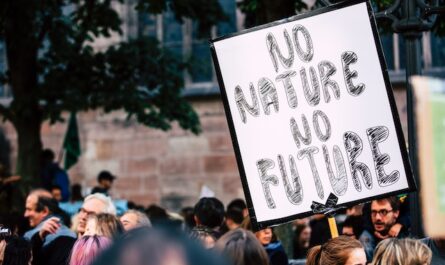Airpocalypse: Why Indian Cities Are Becoming Gas Chambers- The term “Airpocalypse” captures the dire air quality crisis choking Indian cities. Once rare, smog-choked skylines have now become a routine feature across urban India. The thick gray haze is not just an eyesore—it’s a public health emergency. According to WHO, over 20 of the world’s 30 most polluted cities are in India. Cities like Delhi, Kanpur, Ghaziabad, and Varanasi regularly record Air Quality Index (AQI) levels deemed hazardous. But what has caused this environmental disaster? And why are Indian cities turning into virtual gas chambers?
Understanding the AQI and Its Danger Zones
The Air Quality Index (AQI) is a tool used to measure the concentration of major air pollutants like PM2.5, PM10, NO₂, SO₂, CO, and ozone. PM2.5 (fine particulate matter with diameter less than 2.5 microns) is particularly deadly as it can penetrate deep into the lungs and enter the bloodstream.
-
0-50: Good
-
51-100: Satisfactory
-
101-200: Moderate
-
201-300: Poor
-
301-400: Very Poor
-
401-500+: Severe
Many Indian cities routinely score above 400, especially in winter.
The Root Causes of India’s Airpocalypse
1. Vehicular Emissions
India’s rapidly growing population and economic development have led to an explosion of private vehicles. Traffic congestion, outdated diesel engines, and poor fuel quality contribute massively to urban air pollution.
-
Delhi alone has over 12 million registered vehicles.
-
Two-wheelers and trucks are major culprits due to lax emission standards.
2. Industrial Pollution
Unregulated industries—especially in cities like Ludhiana, Kanpur, and Raipur—emit toxins, smoke, and particulate matter. Brick kilns, thermal power plants, and chemical factories are often run without proper filters or emission controls.
3. Construction Dust
Construction and demolition activities generate enormous amounts of dust and debris, which remain suspended in the air due to dry weather and low wind speed. In many metro cities, poor enforcement of dust-control regulations worsens the problem.
4. Crop Stubble Burning
Every year, especially during October-November, farmers in Punjab and Haryana burn agricultural residue to clear fields for the next crop. The smoke drifts towards Delhi and other NCR cities, creating a toxic blanket of smog.
5. Household Pollution
Even within homes, the use of biomass, wood, and cow dung for cooking in poor households contributes significantly to air pollution. The problem is particularly acute in rural and peri-urban areas.
Health Impact: The Price of Breathing
Air pollution in India is now the second leading cause of death, after high blood pressure.
-
1.6 million deaths annually are attributed to air pollution (Lancet, 2023).
-
Increased cases of asthma, COPD, lung cancer, stroke, heart disease, and even developmental disorders in children.
-
Children and the elderly are most vulnerable.
-
A 2020 study by Greenpeace found that air pollution causes an average reduction of 5.9 years in life expectancy in northern India.
The Seasonal Trap: Why Winter Makes It Worse
Every winter, pollution levels spike dramatically in northern India.
-
Cooler temperatures cause temperature inversion, where cold air traps pollutants close to the ground.
-
Lack of wind movement and increased biomass burning for heat exacerbate the problem.
-
Festivals like Diwali, with rampant firecracker usage, turn urban skies into smoke zones overnight.
Government Measures: Too Little, Too Late?
While the Indian government has launched several initiatives, many have fallen short in implementation.
1. National Clean Air Programme (NCAP)
Launched in 2019, it aims to reduce particulate pollution by 20–30% by 2024 in over 100 non-attainment cities. However, experts argue that it lacks legal enforcement and funding.
2. BS-VI Emission Norms
Adopted in 2020, these norms brought fuel and vehicle standards up to Euro-VI levels. Though a step forward, it applies only to new vehicles—not the millions already on roads.
3. Odd-Even Schemes and Firecracker Bans
Delhi’s experiment with traffic rationing and seasonal firecracker bans shows short-term relief but is not a sustainable solution.
4. Smog Towers and Anti-Smog Guns
These are more symbolic than effective, treating symptoms rather than causes.
What Needs to Be Done
India needs structural reforms and massive behavioral change:
-
Public Transport Revolution: Invest in clean, electric buses and metro connectivity.
-
Enforce Industrial Emission Standards: Shut down or retrofit polluting units.
-
Crop Management Support: Provide viable alternatives like Happy Seeders to farmers.
-
Green Urban Planning: Prioritize tree cover, green belts, and dust-free construction methods.
-
Public Awareness Campaigns: Like anti-tobacco campaigns, teach people the deadly effects of bad air.
The Summary: Time Is Running Out
India’s air pollution crisis is not just an environmental issue—it is a national emergency. If current trends continue, millions more will die prematurely, and the country will suffer immense social and economic costs. This “Airpocalypse” is man-made, and so must be the solution. India must choose—either we change the air, or the air will change us.
How a Tiny Town in Western Australia Sparked the Largest Migration in History! | Maya




